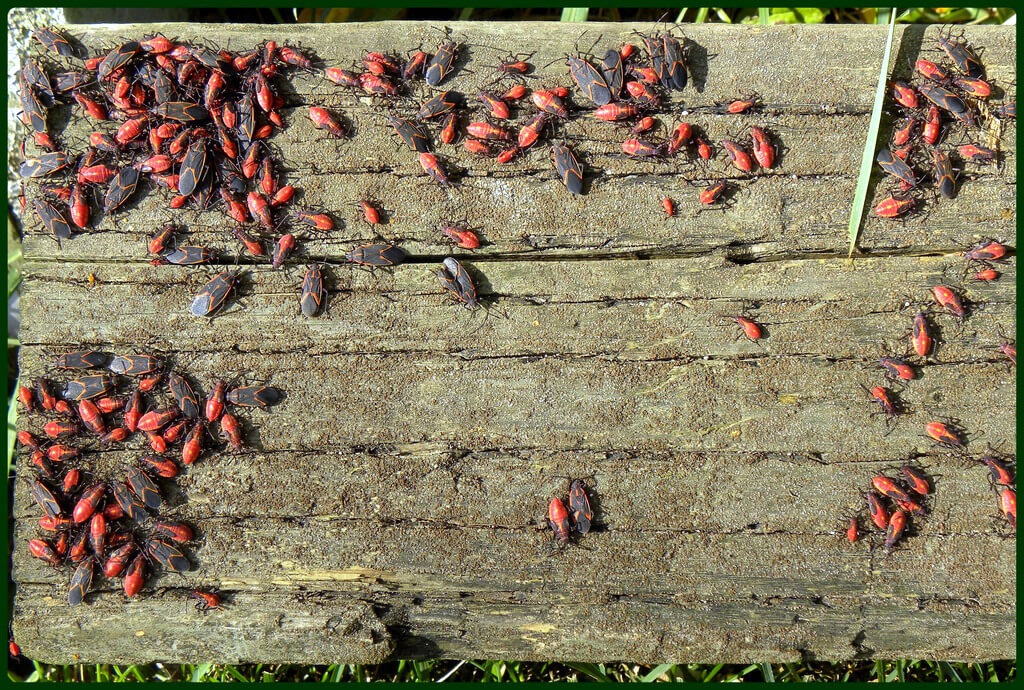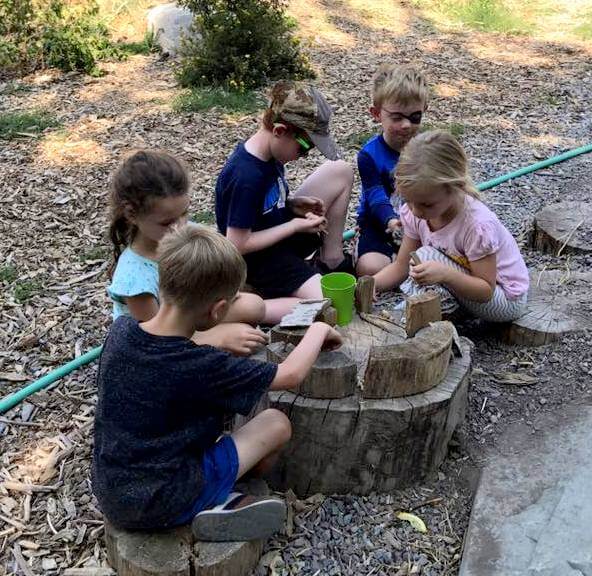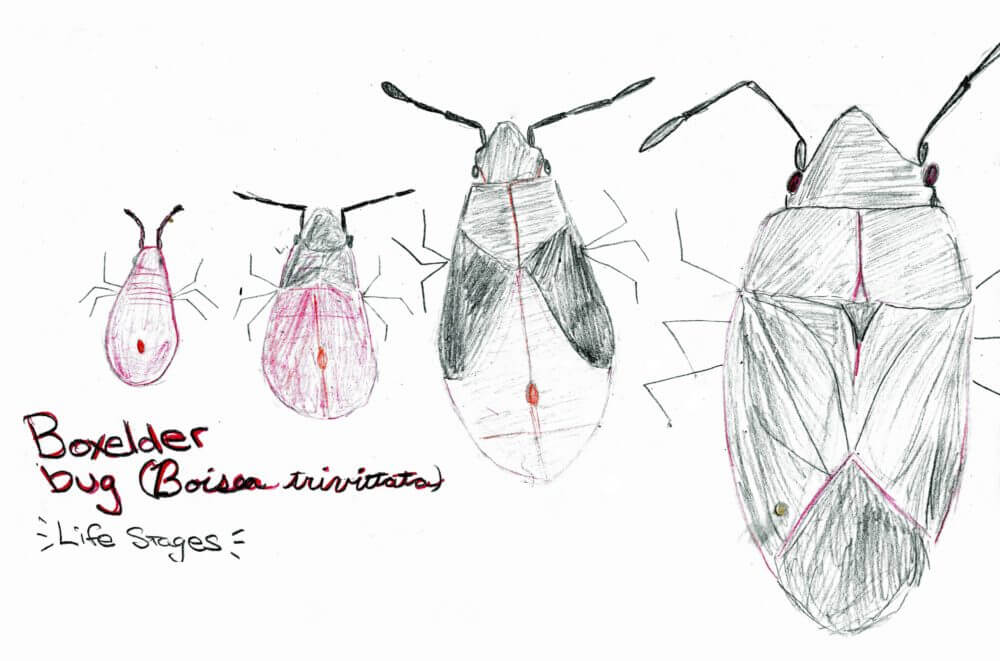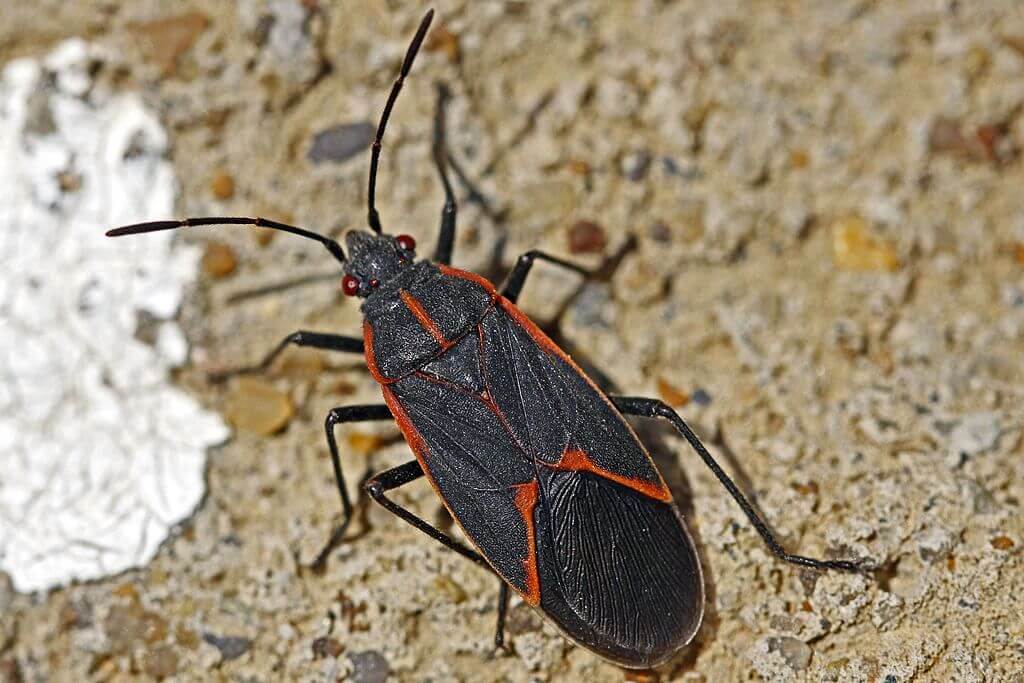by Stephanie Laporte Potts
They gather in the trees. On the ground. In cracks on the sidewalk and that sunny spot in the garden. Little red and black spots, sometimes spread out, and sometimes in massive pulsing blobs of dozens of individuals. Then, once summer camp starts, they begin to invade my office. That’s when I know summer is really here.

Photo by Flickr user haven’t the slightest, CC 3.0.
The swarms of boxelder bugs (Boisea trivittatus) that we see in Missoula may seem unsettling, but they really are quite harmless, and are fascinating to watch live and grow. A common sight in Missoula’s urban ecosystem in the summer, they are here because they associate with boxelder trees, which line our city streets and irrigation ditches. They eat and breed on female, seed-bearing boxelder trees, and sometimes on ash and maple trees. When they are breeding and growing, they will often come to other areas for warmth or water, but they eat little else other than their host plant. They do not even have the mouth parts necessary to bite humans.
That’s a good thing, because one of the favorite activities of Montana Natural History Center summer campers is catching and building habitats for boxelder bugs. The bugs are so fascinating and conspicuous that I’m confident the kids would catch them even if we discouraged it, but as environmental educators, we are thrilled that they are so taken with observing these amazing creatures and learning about the elements of habitat they need to survive. Sure, sometimes they escape from the summer camp classroom and make their way to our administrative offices…and exhibit hall…and storage closets…and everything else. But it’s a small price to pay for camper-led nature discoveries!
In summer camps and all of MNHC’s programs, we make a conscious effort to teach and model respectful attitudes towards nature. So, we don’t squish or maim the boxelder bugs we find; we make them luxury insect hotels! Using collecting jars, logs, tree cookies, leaves, and anything else we can find outdoors, this summer’s campers made everything from a simple jar habitat to what can only be described as the Insect Ritz. In doing so, our campers have fun, work together, practice engineering, express creativity, and learn about all the things—such as food, water, and shelter—that insects and other creatures need to survive.

Once they started watching “their” bugs, another amazing thing happened: some summer campers began constructing and understanding the boxelder bug life cycle, entirely on their own. A member of the Hemiptera, or true bug, order, boxelder bugs emerge from eggs and then go through several nymph stages before reaching their flying, adult form. The kids noticed this, finding the large ones, the eggs, and all the different small forms in between, and then putting them in order, trying to figure out exactly what was going on.
They came to us instructors and asked what was going on, and we had discussions to help them figure out that the different sizes and colors were different ages/stages of boxelder bugs. Some students recognized that this is somewhat like butterflies and caterpillars. Other campers were able to make a connection to this knowledge and apply it later in the week when we were looking for aquatic macroinvertebrates like mayfly larvae. Having these massive quantities of harmless, colorful insects available for the kids to explore and study gave them a solid, real-world connection to the concept of insect life cycles that they can continue to build on in future learning.

Nature journal sketch by Stephanie Laporte Potts.
It’s easy to see big masses of red boxelder bugs and reach for the insecticide, or at least think they are gross and look the other way. But I encourage you to take a fresh look at them through the eyes of a child or a naturalist. They are fascinating, harmless, and, honestly, pretty darn cute (especially the young ones!). If you’re still unsure, contact us about volunteering with our summer camps next summer, and I’m sure the kids’ enthusiasm will convince you that boxelder bugs are great!

Photo by Judy Gallagher, CC 2.0.












